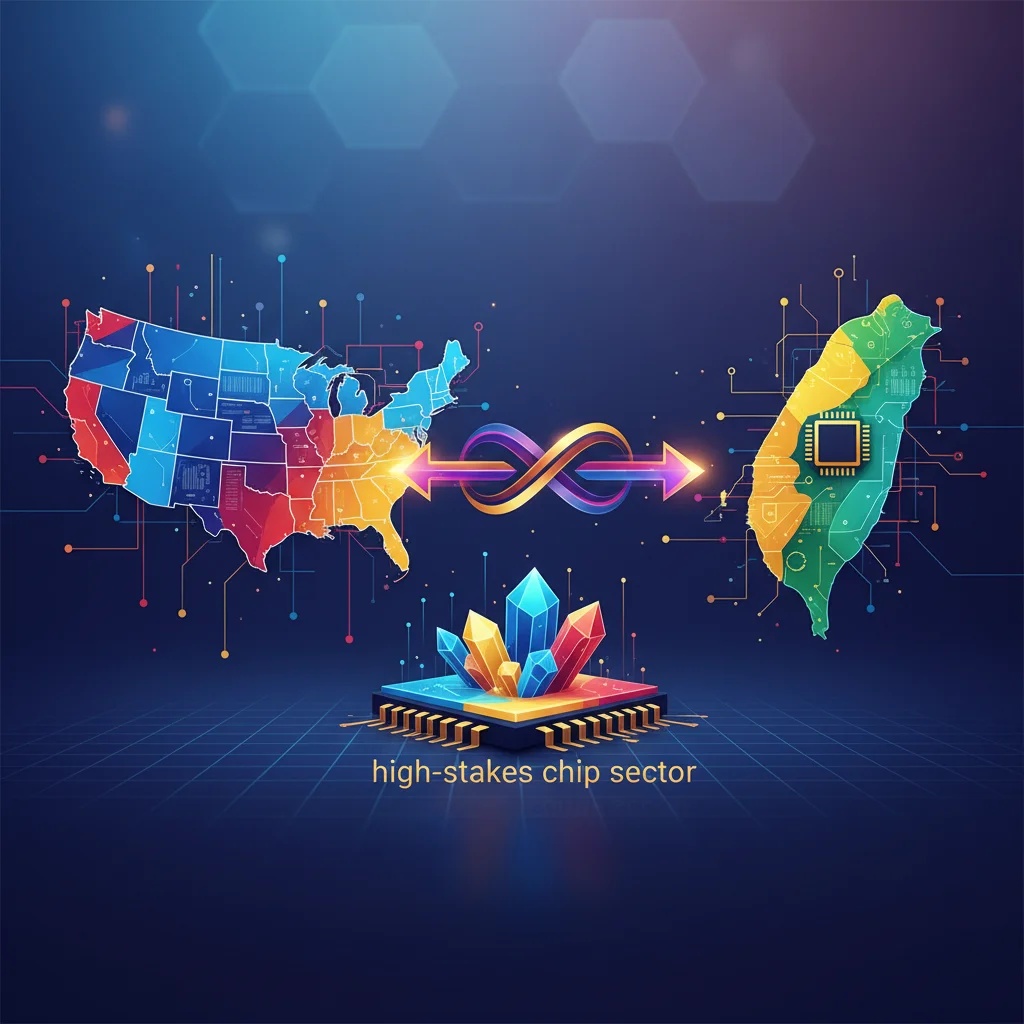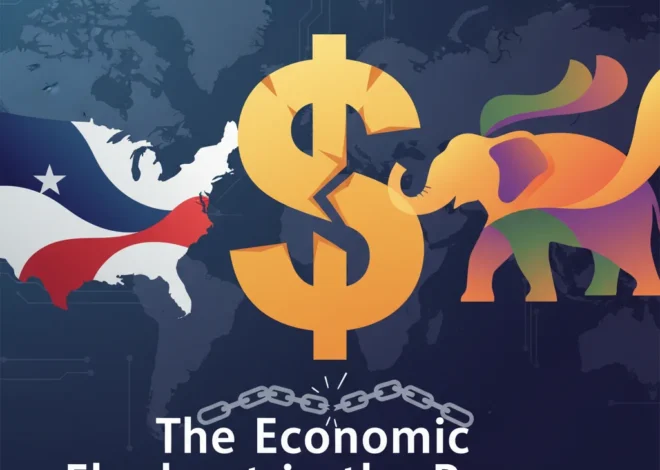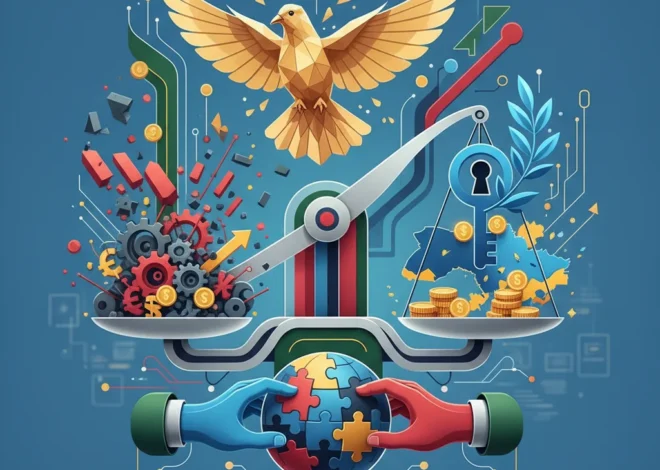
Beyond Tariffs: Decoding the New US-Taiwan Economic Alliance in the High-Stakes Chip Sector
In the intricate world of global finance and technology, few components are as critical as the semiconductor. These tiny silicon marvels are the lifeblood of the modern economy, powering everything from our smartphones and cars to the vast data centers that underpin the stock market and complex financial technology. At the center of this universe lies Taiwan, a technological powerhouse whose stability is paramount to global economic health. Recently, a significant statement from a top Taiwanese official has sent ripples through investment circles, signaling a new phase in the crucial US-Taiwan relationship.
Taiwan’s technology minister, Wu Tsung-tsong, has confidently stated that he does not expect the United States to impose “punishing” tariffs on the island’s vital semiconductor sector. This assertion, reported by the Financial Times, isn’t just wishful thinking; it’s rooted in the framework of a nascent trade deal and a deep, symbiotic relationship that underscores the future of global economics and technology.
For investors, business leaders, and anyone tracking the pulse of the global economy, this development is more than just a headline. It’s a critical data point that speaks to supply chain security, geopolitical strategy, and the future trajectory of the tech sector. Let’s delve deeper into what this means and why it matters for finance, investing, and the broader economic landscape.
A New Blueprint for Trade: The 21st-Century Initiative
The foundation of Minister Wu’s confidence is the “US-Taiwan Initiative on 21st-Century Trade.” This isn’t your typical trade agreement focused on slashing tariffs and opening markets in a traditional sense. Instead, it represents a more sophisticated approach to economic partnership, prioritizing regulatory alignment, streamlined customs procedures, and the establishment of mutual trust. It’s a framework designed for an era where supply chain resilience and technological collaboration are as valuable as market access.
This initiative aims to create a more predictable and transparent environment for trade and investment. By harmonizing standards and cutting bureaucratic red tape, both nations are building a foundation of deep-seated cooperation. For the financial world, predictability is gold. A stable regulatory environment reduces risk for companies investing in cross-pacific operations and provides a clearer outlook for forecasting and stock market analysis. This move is less about a short-term trading boom and more about a long-term strategic alliance, insulating a critical sector from the kind of tariff shocks that have destabilized the global economy in recent years.
The Paradox of India's Growth: Why a Booming Economy is Begging for a Spending Spree
The Unspoken Leverage: Taiwan’s Semiconductor Dominance
To truly understand why the US would eschew tariffs, one must look at the global semiconductor supply chain. Taiwan isn’t just a player; it is the stadium in which the most important games are played. Led by the titan Taiwan Semiconductor Manufacturing Co. (TSMC), the island is responsible for an astonishing portion of the world’s most advanced chips.
This table illustrates the stark reality of Taiwan’s dominance, particularly in the cutting-edge nodes that are essential for AI, high-performance computing, and advanced financial technology.
| Country/Region | Global Semiconductor Foundry Market Share (Q4 2023) | Key Players |
|---|---|---|
| Taiwan | ~61% | TSMC, UMC, PSMC, VIS |
| South Korea | ~14% | Samsung |
| China | ~8% | SMIC, Hua Hong |
| United States | ~6% | GlobalFoundries, Intel |
| Rest of World | ~11% | Various |
Source: Data compiled from industry analysis reports.
As the data shows, Taiwan, and specifically TSMC, holds a near-monopolistic position in the production of the most advanced logic chips—those under 10 nanometers. These are the chips that power the servers for high-frequency trading, enable the complex algorithms used in fintech, and will form the backbone of future blockchain applications. The United States, and indeed the entire world, is profoundly dependent on this supply. Imposing “punishing” tariffs would be an act of economic self-harm, driving up costs for every major US tech company and potentially crippling innovation across the economy.
The CHIPS Act and the Spirit of “Co-opetition”
The US CHIPS and Science Act, which allocates over $52 billion to bolster domestic semiconductor production, might seem like a direct challenge to Taiwan’s dominance. However, the current dynamic suggests a more nuanced relationship of “co-opetition”—a blend of cooperation and competition.
In a gesture of goodwill and strategic partnership, Minister Wu mentioned that Taipei is willing to share lessons from its world-leading industrial model. This isn’t about giving away trade secrets; it’s about helping the US build its own ecosystem more effectively. Taiwan understands that a more diversified global supply chain, with a strong node in a key ally like the US, ultimately enhances its own security. Furthermore, major Taiwanese players like TSMC are already key partners in the US reshoring effort, with massive fabrication plants (“fabs”) under construction in Arizona (source). This deep integration makes the two economies partners, not just rivals.
Ghosts of Economic Past: Why a 1970s Socialist Blueprint Still Haunts Modern Finance
This collaborative approach ensures that as the US builds its capacity, it does so in a way that complements, rather than supplants, Taiwan’s role. It’s a long-term strategy to de-risk the global supply chain from a single point of failure without disrupting the current flow of technology that fuels the global economy.
Implications for the Global Economy, Finance, and Investing
The assurance of a stable, tariff-free relationship in the most critical sector of the tech industry has wide-ranging implications:
- For the Economy: A stable chip supply helps to tame inflation. The semiconductor shortages of recent years were a key driver of price hikes in automobiles and electronics. A predictable supply chain allows for better economic planning and steadier growth.
- For the Stock Market: This news provides a degree of certainty for the entire tech sector. Companies from Apple and Nvidia to smaller tech firms can model their costs with greater confidence. It’s particularly bullish for semiconductor ETFs and companies heavily reliant on TSMC’s manufacturing.
- For Financial Technology (Fintech): The relentless pace of innovation in fintech—from AI-driven wealth management to secure blockchain ledgers and high-speed trading platforms—depends on access to ever-more-powerful chips. A secure supply chain means the engine of financial technology can continue to run at full speed.
- For Investors: The key takeaway is that while geopolitical tensions remain a long-term risk factor, the immediate threat of a tariff-driven trade war in the chip sector appears low. This allows investors to focus on company fundamentals, technological advantages, and market demand when analyzing semiconductor stocks and related industries.
Primal Finance: What Chimpanzee Behavior Teaches Us About Modern Investing
The Path Forward: A Symbiotic Future
The message from Taipei is clear: the US-Taiwan economic relationship is evolving from a simple buyer-seller dynamic into a deeply integrated strategic partnership. The absence of punitive tariffs is not a concession but a logical outcome of this alliance. By focusing on shared standards, regulatory cooperation, and mutual investment, both nations are working to build a more resilient and prosperous technological future.
For those in finance, banking, and investment, this strategic alignment is a crucial variable in a complex global equation. It signals a move towards stability in a notoriously volatile sector and underscores the indispensable role that Taiwanese innovation plays in the global economy. While the world remains a complex place, this development is a clear and positive signal for the technological and economic road ahead.


